Keithley 177 Microvolt DMM
This is a great DMM from the around 1979.
It is called “Microvolt Digital Multimeter” because it has a resolution down to 1 microvolts. Even more interesting is the current range, going down to 1nA (nanoampere) resolution.
This is due to the DC range 20 mV (20.000mV) and DC current range 20 µA (20.000µA). Finally, it has a 1mOhms resolution on 20.000 ohms range.
This multimeter is great to measure small currents, e.g. standby or powerdown currents of microcontrollers and other stuff.
I bought this at ebay as being in fully working state. Nothing worked when it arrived. Only one digit was displaying something, but it did not measure anything.
Why is that smallest range (20µA) worth mentioning it?
To give an example, my new OWON HS242 has a mA-Range. This will display current with 00.00 digits, in milliampere. This means 0.1 displayed means 0.1mA=100µA. Smallest possible value is 0.01=10µA. Smaller values than 10µA cannot be displayed. Also, a value of 11µA looks the same as 19µA - always “0.01”.
Compare this to old Keithley 177. It has the smallest range 20.000 µA. So the smallest possible value displayable is 0.001µA.
This is 10.000 times smaller than the smallest possible value of the OWON HS242 !
The smallest possible value on OWON, 10µA, there shown as 0.01 mA, would display as 10.000 µA on the Keithley 177. In the Keithley, we have 4 more digits resolution. Regarding resolution, there are whole worlds between OWON HS242 and Keithley 177.
Don’t get me wrong, I like the OWON meter. It is quick by hand, has batteries and works in most cases very well. It just lacks high resolution ranges.
This is a little bit strange, because I think with only a few cents more, they would have been able to offer a 1mA range or a 100µA range. This is not a technical problem. They just decided to not offer that. It is a pity.
But hey, you can get these old Keithley instruments, they are not as expensive as HP or Tektronix, somehow hidden champions…
Racal Dana offers the 4003, also cheap today, looking identical to the Keithley 177. I haven’t tested this one.
Images
Front (after repair), measuring 10 ohms reference resistor (10 Ohms 0.02%):
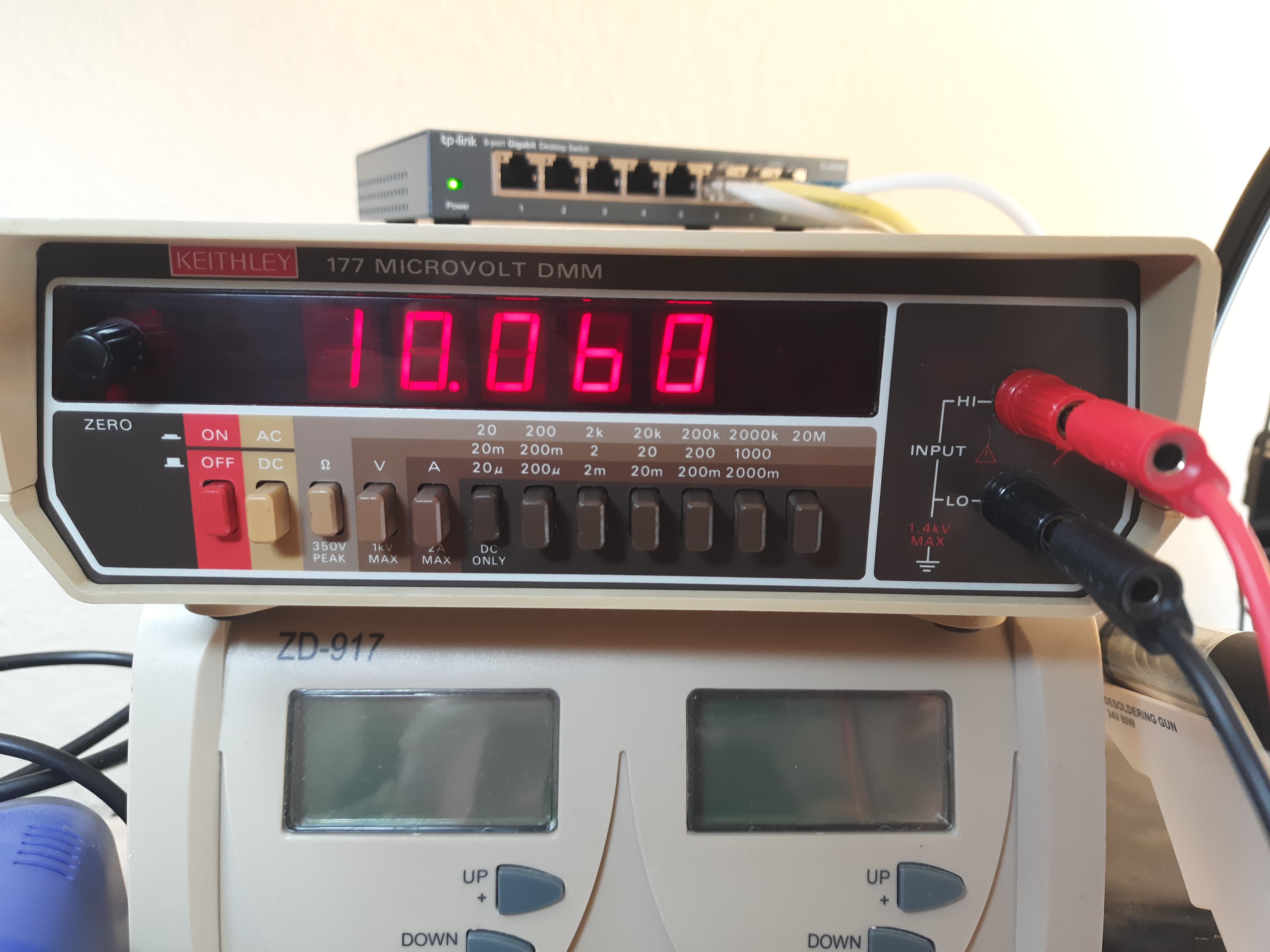
Back:
.jpg)
Data sheet:
.jpg)
Full view on PCB:
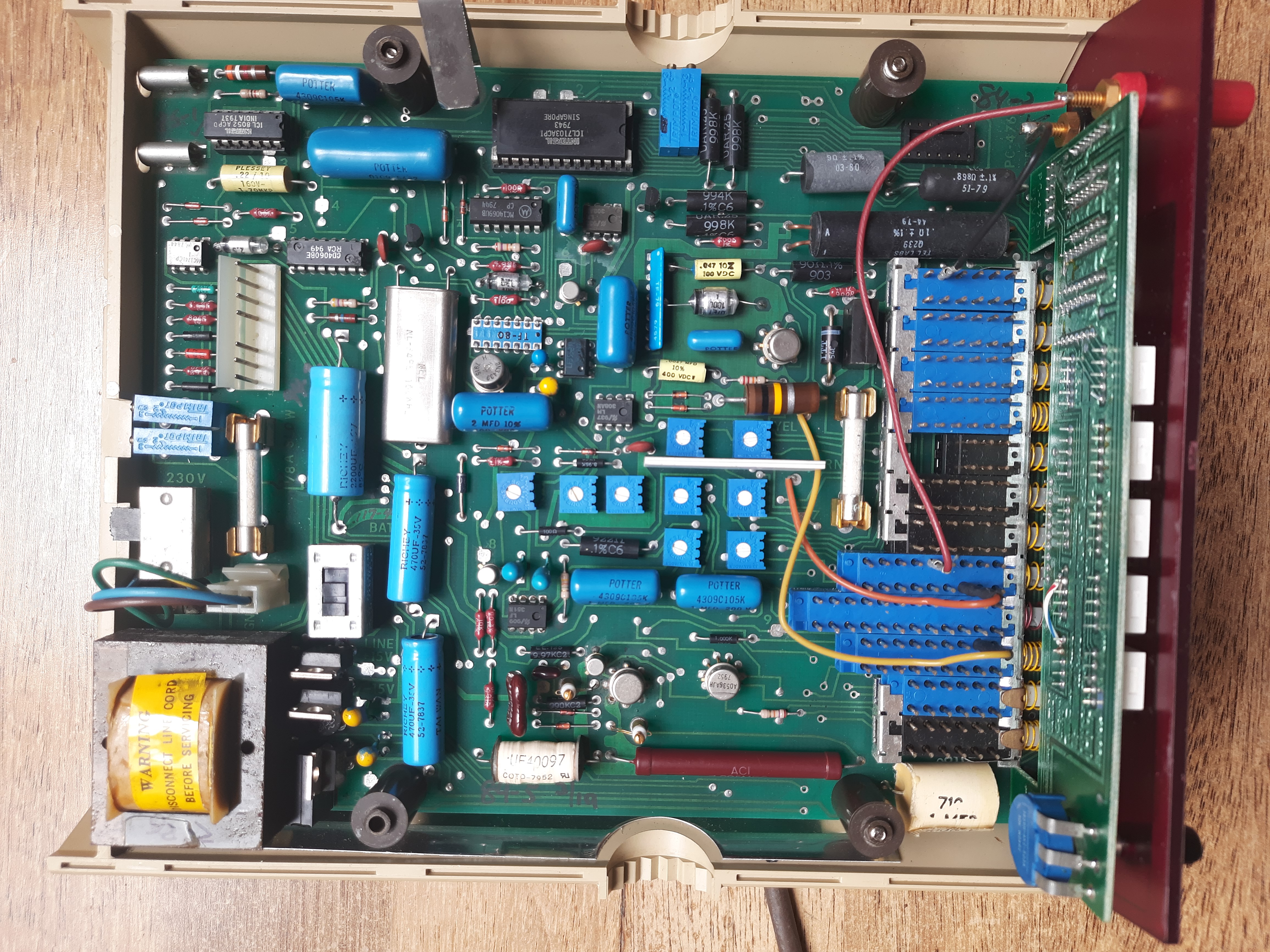
Intersil ICL7103 main chip:
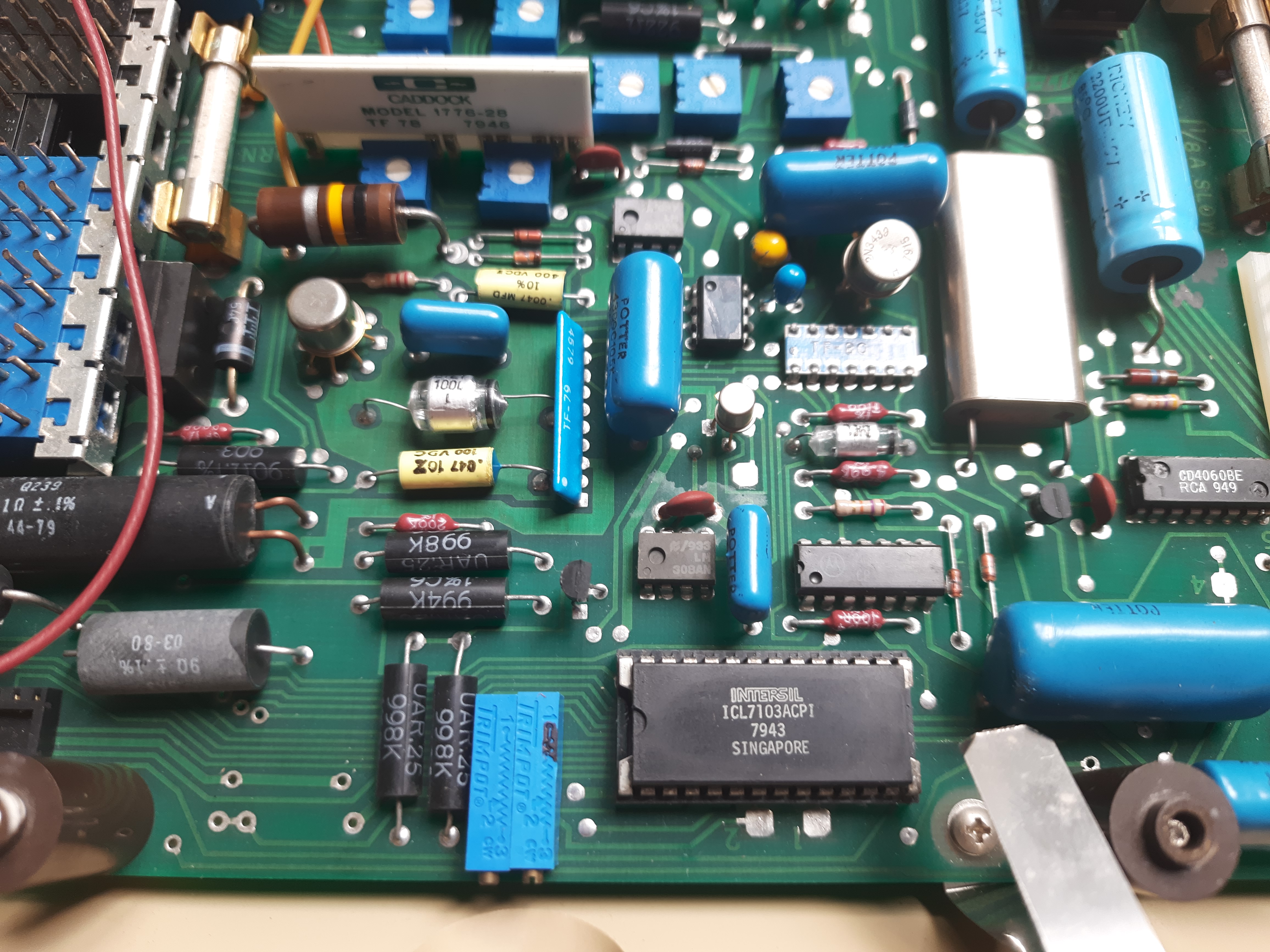
A funny “double-resistor” .1 ohms:
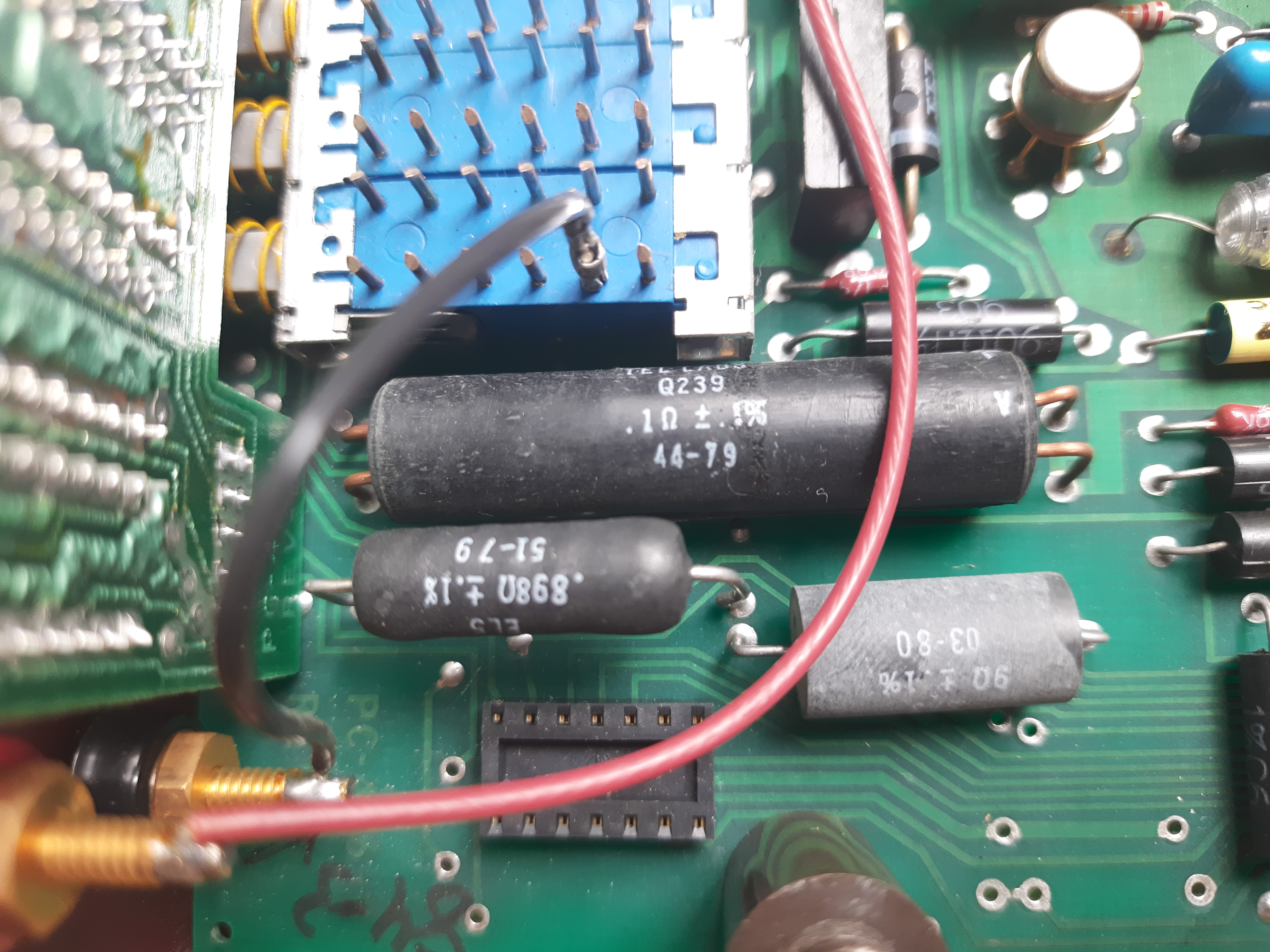
4 1/2 digit display PCB:
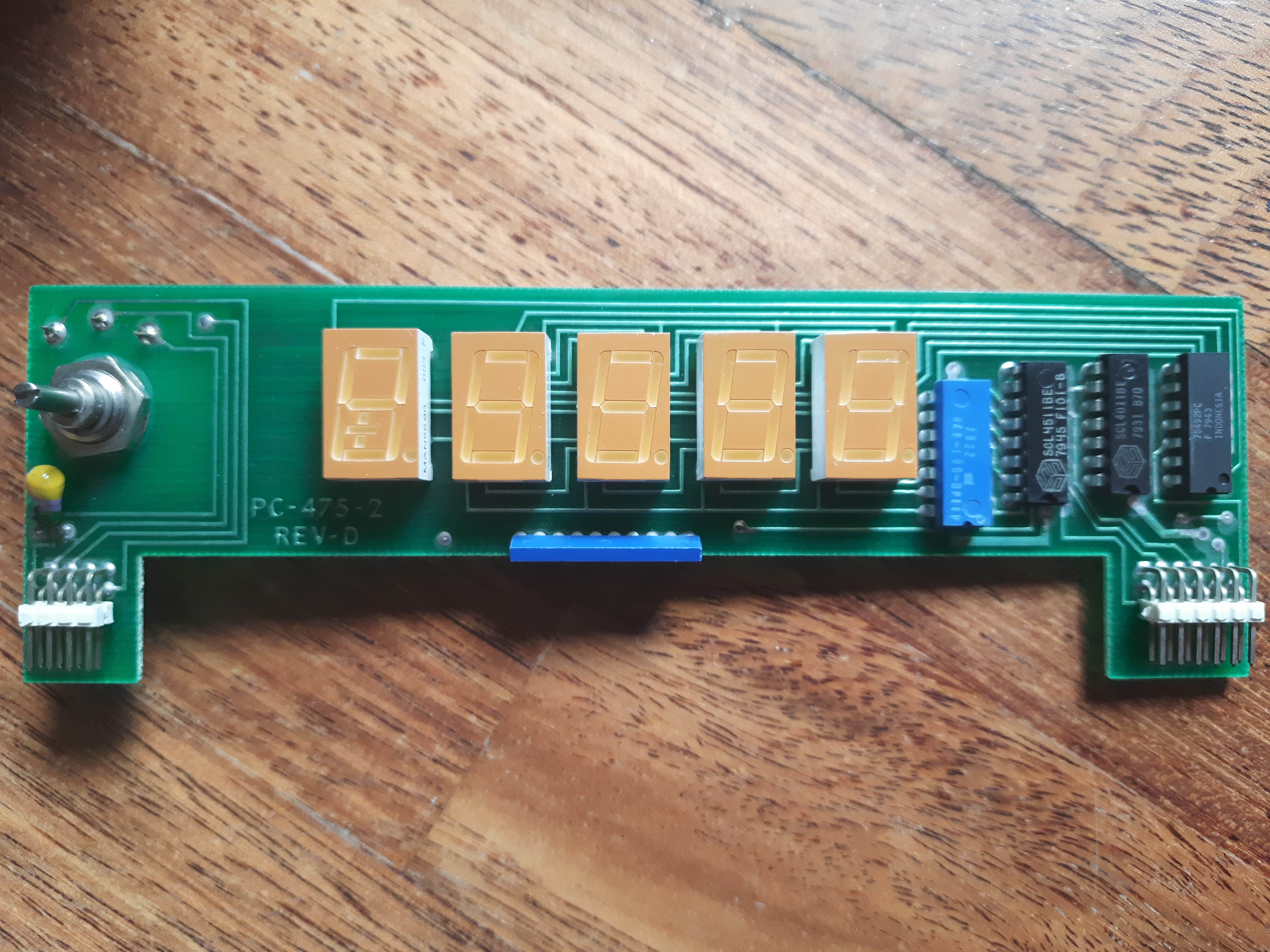
Repair
-15 volts was not distributed over the whole PCB. Only a part of the rail had -15 volts. So nothing was displayed, meter was dead. I found a bad soldering at Q102. Obviously, Q102 was soldered out and replaced. The soldering quality of this replacement job was very poor. I found that one pin was soldered on the solder side of the PCB, but on the copper trace at the upper side, there were no -15 volts.
After fixing that, by adding solder also on upper side, -15 volts was distributed everywhere, but it came out the rail was shorted somewhere.
It came out that this was due to a shortened defective tantal capacitor.
I replaced it with a good quality standard capacitor:
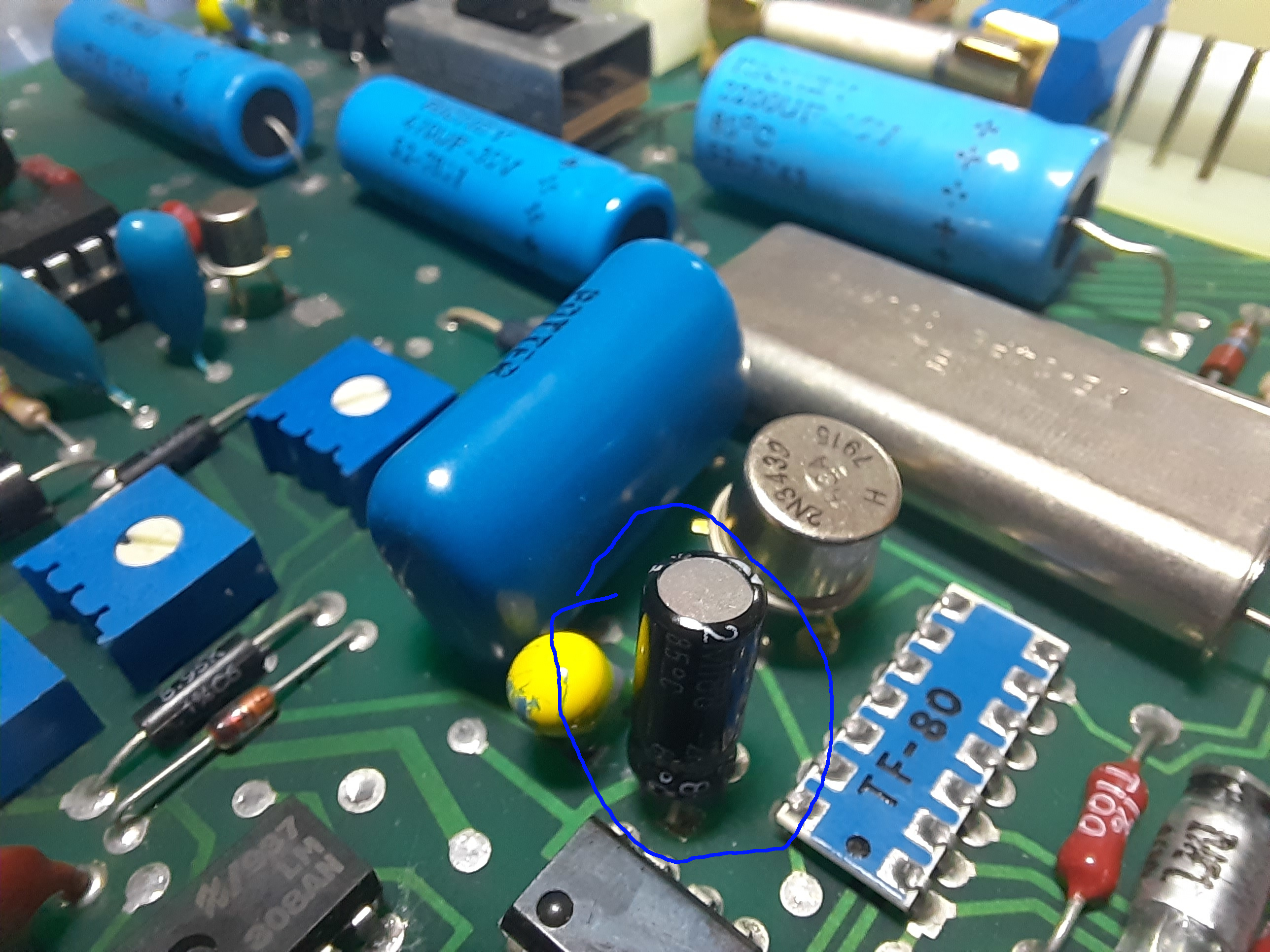
Now DCV worked. ACV failed.
By checking signals with a scope, I found that the signal was lost
between input pin and output pin of OpAmp Q102.
It has constant +15 volts output. This is a LF351N.
It already was a replacement, very badly soldered in. I soldered
in a socket and replaced it with a LF355N I found in my box.
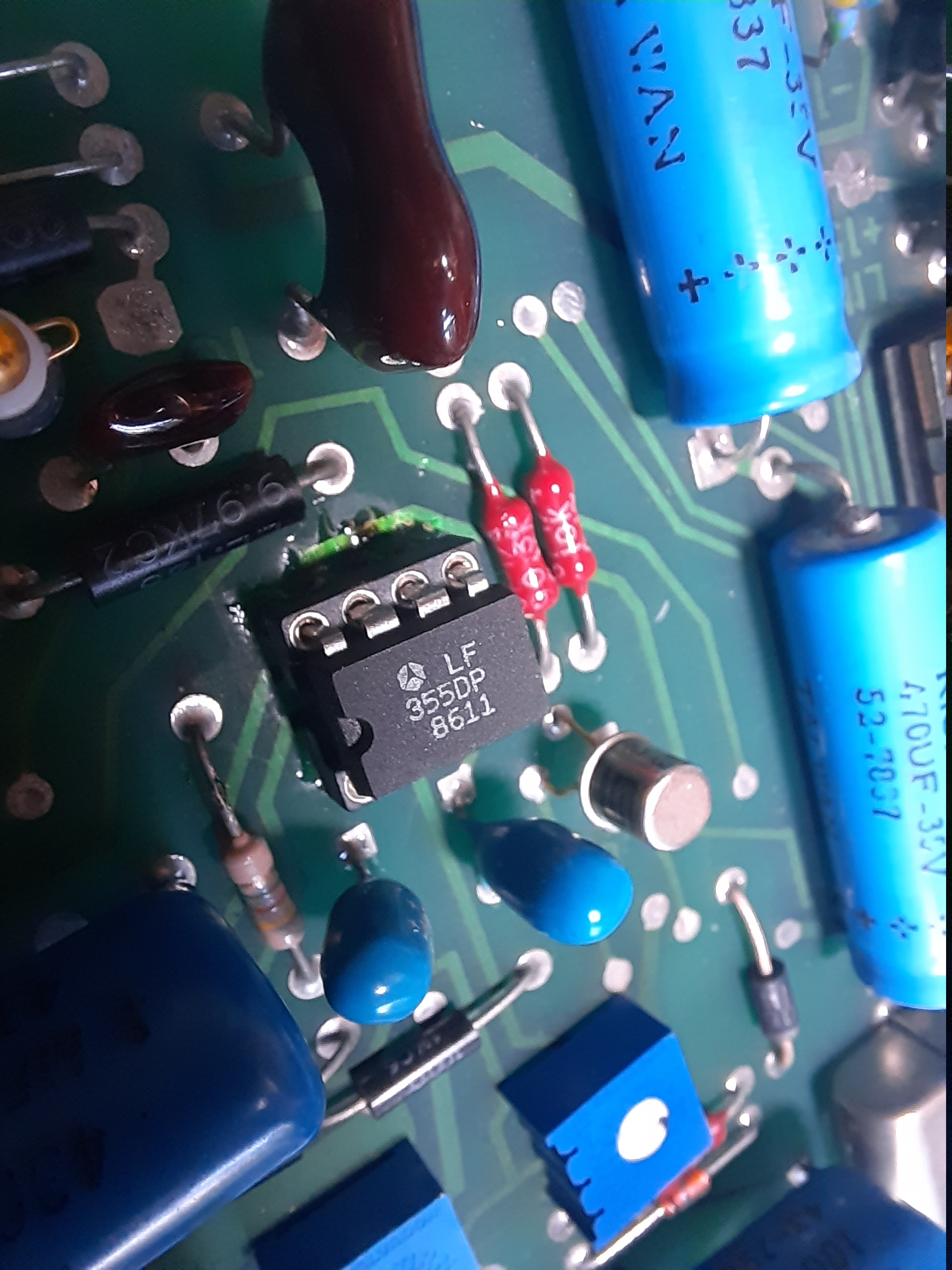
Now ACV worked too, but some ranges were wrong. I found that the divider by 100 failed.
This divider is enabled by a FET transistor, used as switch. The FET was ok, but when checking the PCB, I found that a part of the copper was missing. And this again, was in the area of Q102.
As can be seen in the detail image, the very poor soldering job of the past by someone. This “repair” did, as it came out, introduce at least two new problems (missing -15 volts rail, destroying the by-100-divider),
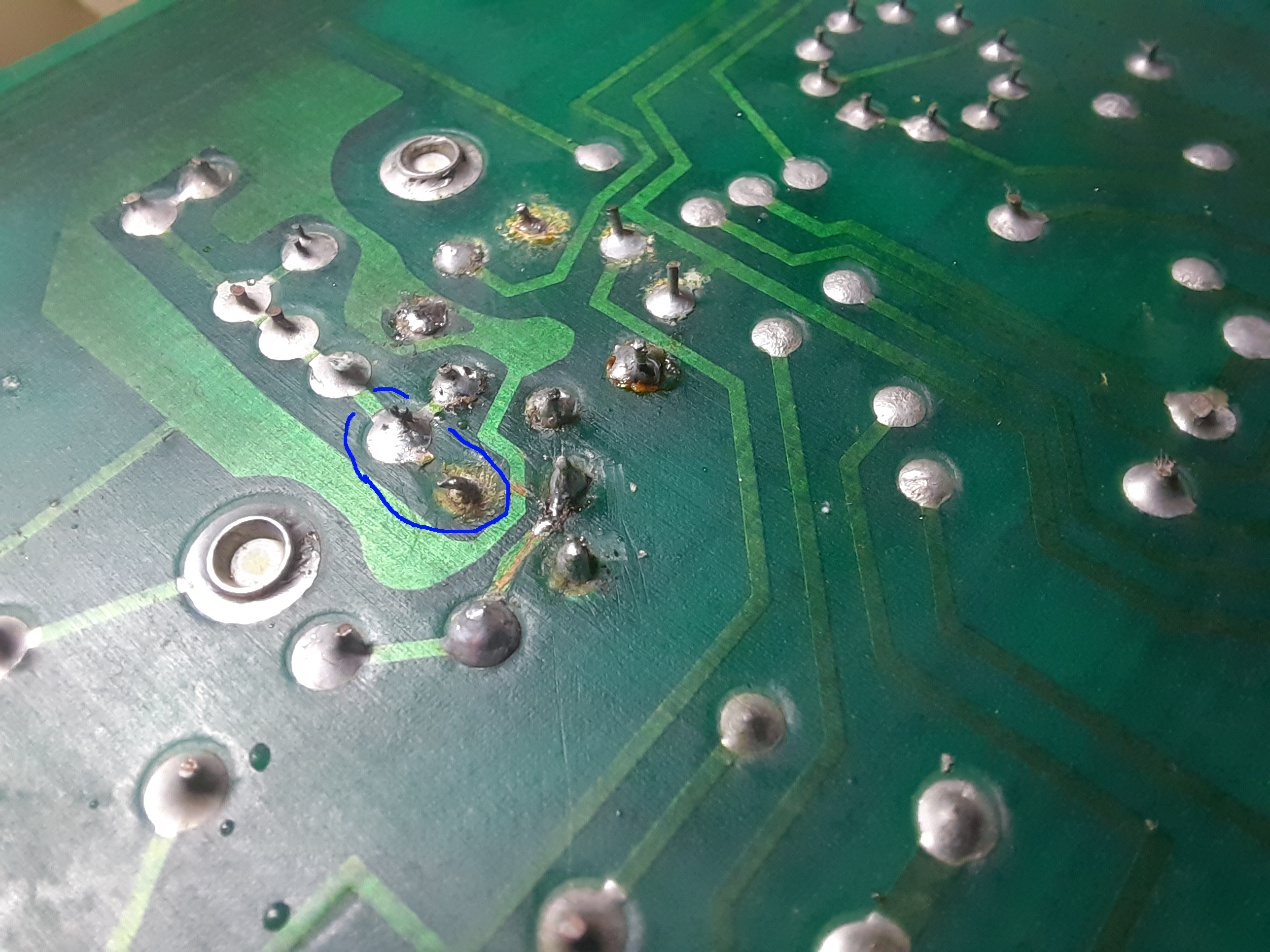
I fixed the PCB trace and then the AVC divider worked again.
As last thing I tried Ohms and Current mode, both work.
All ranges have small deviations, the whole thing needed a slight recalibration. This was done next day. It came out that the device worked very well again.
Later I also replaced all remaining tantal capacitors. The 177 has in total 6 of them, 2x33µ, 4x4.7µ. The remaining 5 measured fine, but a tantal changes from good to dead state for unknown reason, and it fails suddenly, usually with a internal short. So it is better to exchange them.
All remaining tantals removed. For the 4.7µ non-text ones, note the plus pin is where some blue line
can be seen on the capacitor. In other cases this is a dot or some other mark denoting the
plus pin:
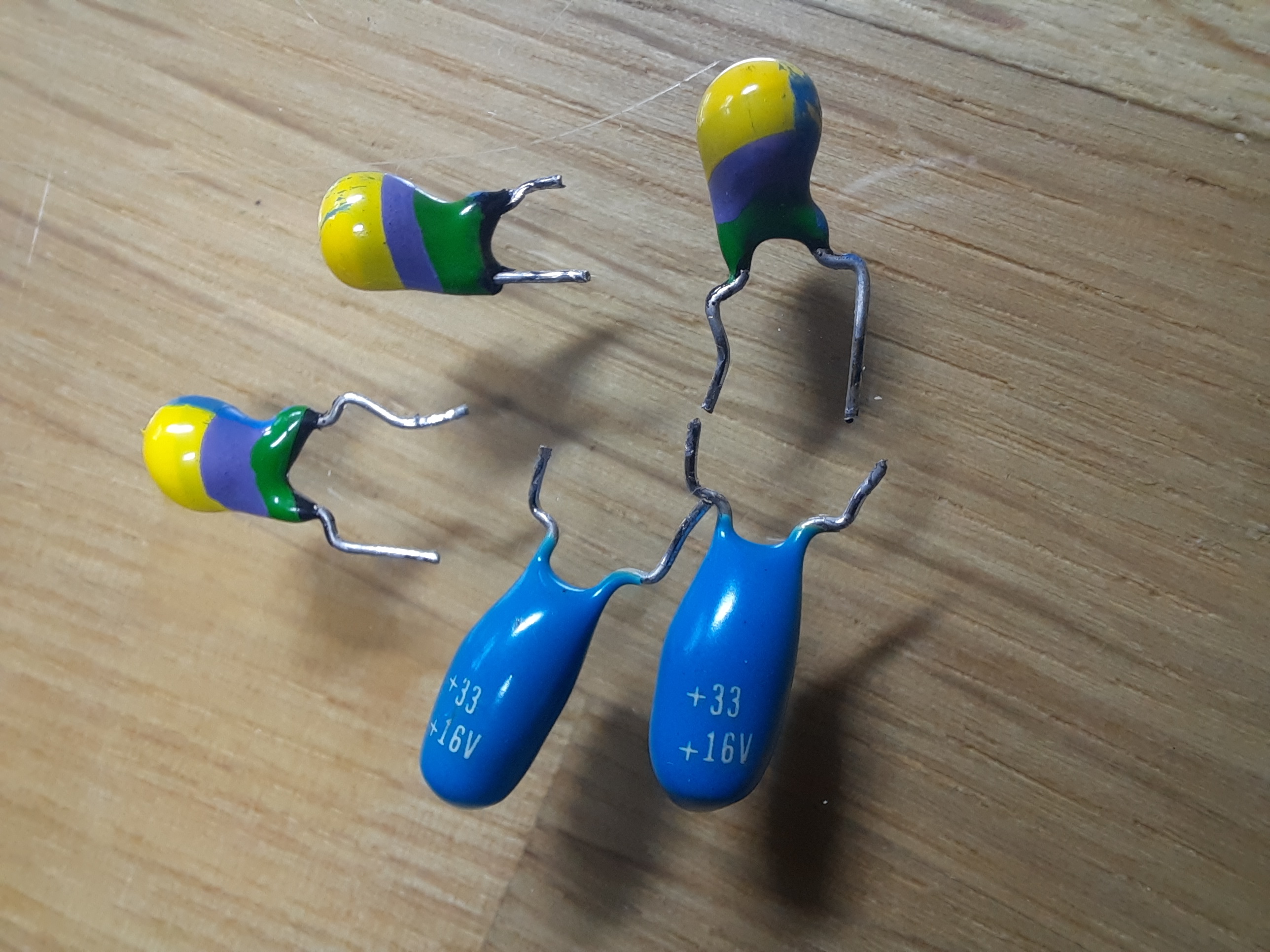
Performance measurements
Because I wanted to use this DMM to measure very small currents (in range 100-0.1 µA), I did some test measurements to get a feeling how well it works.
I measured current at a fully loaded LiIon cell that gave 4.166 volts. I measured the current with resistors with increasing values, from 100 Ohms to 100 Megaohms.
| R | I measured | I calculated | Range |
|---|---|---|---|
| 100 5% | 40.82 mA | 41.66 | 200 mA |
| 1 K 1% | 4.150 mA | 4.166 | 20 mA |
| 10 K 1% | 0.4115 mA | 0.4166 | 2 mA |
| 120 K 1% | 34.28 µA | 34.71 | 200 µA |
| 1 M 5% | 4.137 µA | 4.166 | 20 µA |
| 60 M 5% | 70 nA | 69.94 | 20 µA |
| 100 M 5% | 42 nA | 41.66 | 20 µA |
To test measurements in range <10nA, I changed test setup.
I used both Rigol DG811 waveform generator with DC “waveform” and HP 6111A precision PSU, which allows to define output voltages down to mV level. There I defined as input voltage 416.6 mV (Rigol) and 416 mV (HP).
Resistor was in both cases the 100 MOhms one I own.
I did this like this, because I do not own a voltage calibrator. These two devices are the most precise devices I own, so I took them.
| DC voltage provider | I measured | I calculated | Range |
|---|---|---|---|
| Rigol DG811 416.6 mV | 3 nA | 4.166 | 20 µA |
| HP 6111A 416 mV | 4 nA | 4.166 | 20 µA |
To summarize, this is a great result. For µA and even nA values, the measured results are close to the calculated values. Only measurement that is not looking well is Rigols 416.6 mV output. But as already said, this is not a calibration device.
The picture below show the largest resistors used. While 1M is a common value, the 60M and 100M resistors are rarely to be seen and used. I cannot remember where I pulled them out.
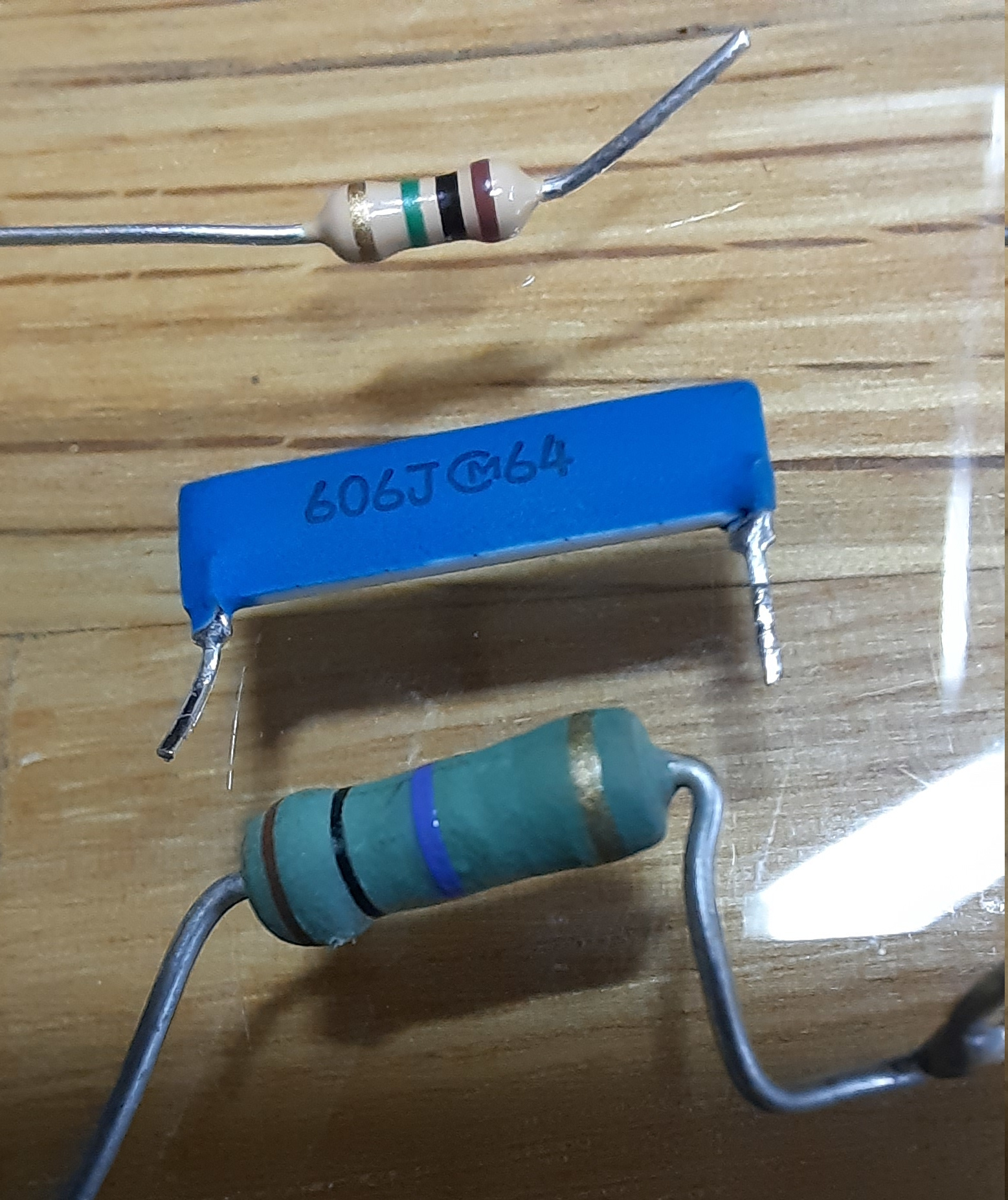
Related
https://www.amplifier.cd/Test_Equipment/other/Keithley_177_Microvolt_Digital_Multimeter.htm
